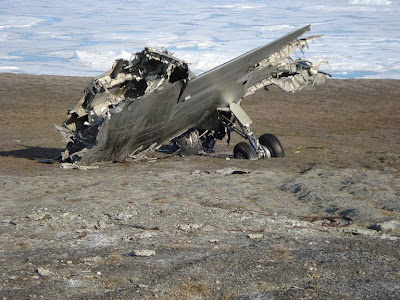Although Ugg the caveman may tell you otherwise, settlements as northerly as Alert have only started to become a reality in the last half century. The Canadian Forces Station of Alert has been pieced together over that time with new additions and improvements being undertaken all the time. During the summer months (a balmy 5 degrees Celsius tells you it’s time to break out the sun-screen and enjoy the 24 hour sunlight), the CFS station can be home to in excess of 100 residents; typically around 50 during the winter months.
The station as it exists now is quite the opposite of roughing it, with a gymnasium, 2-lane 5 pin bowling alley, theatre, computer labs and all the other benefits of electricity and running water. As comfortable as it is on the inside, there definitely won’t be any awards for architectural ingenuity. The outside of the station, in my opinion, resembles a large stack of railroad boxcars, very large ones, stacked and adjoined to one another as necessity dictates.
Thanks to Alert not being involved in any outdoor city beautification projects, I was able to see the remains of two of the planes which went down between the 50s and 70s (or so I was led to believe, take this as a Wikipedia-like disclaimer as to the validity of the information contained in the blog herein).
These first three pictures were taken from the plane which crashed near the runway. According to the story they were attempting to land during unadvisable storm conditions.

Despite the susceptibility of all living things in this climate a number of life forms do manage to survive. As of this point the most I’ve seen are very small flowers and a couple of birds.
While on my miniature hikes to the crash sites I was more interested in the landscape than any of the history or animals that might be present. As this video illustrates, walking along the shale coastline sounded (and felt I imagine) like walking on a huge pile of your grandma’s finest china. It was awesome!
.JPG)
.JPG)
.JPG)
 Next time on BAA: A special visitor, animal sightings and more!
Next time on BAA: A special visitor, animal sightings and more!Same BAA time, same BAA channel!
Byron
Ice to see you!

.JPG)
.JPG)











